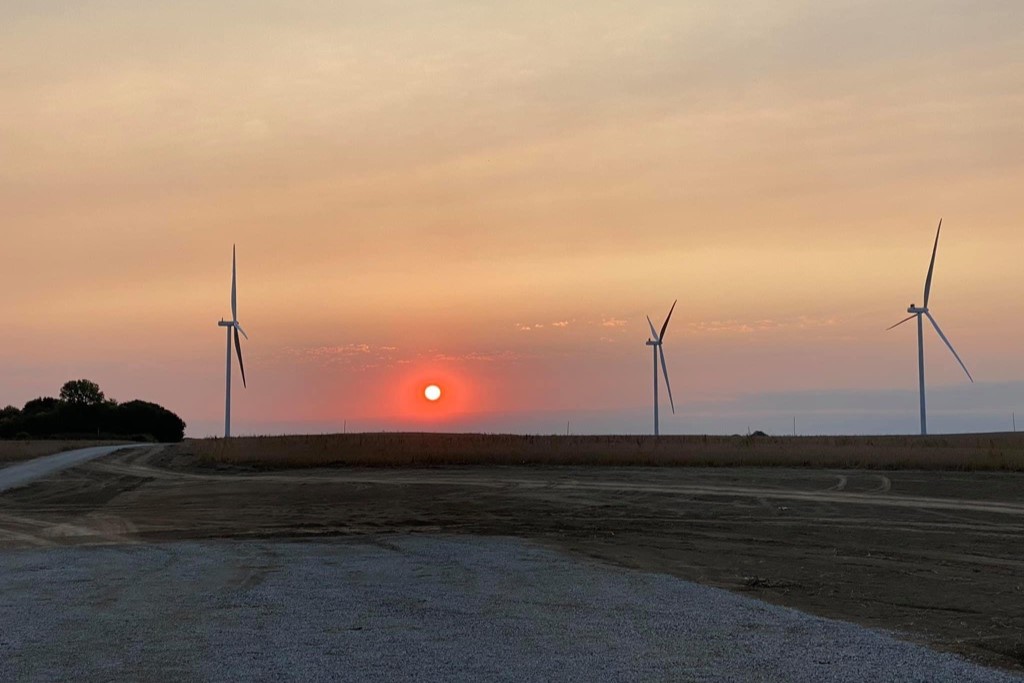The Sugar Creek Wind Farm is a 57-turbine wind farm spread across 12,120 acres of private land in Logan County, Illinois, with a capacity of up to 202 megawatts (MW). The project’s owner, Sugar Creek Wind One, LLC, used two different wind turbine models, the Vestas V150 4.2 MW and the Vestas V110 2.0 MW.
Understanding the sound profile of renewable energy projects is an integral part of deploying wind and solar energy solutions across the United States. Preconstruction and postconstruction evaluation of the sound emissions of the turbines in the existing environment was a part of the regulatory approvals process for the Sugar Creek Wind Farm project. These studies demonstrate the wind farm does not exceed octave band limits set by the state of Illinois.
The Challenge
The project was proposed in December 2018, with Sugar Creek Wind One planning a 57-turbine wind farm using two different wind turbine models, the Vestas V150 4.2 MW and the Vestas V110 2.0 MW turbines. Before construction could begin, the company needed to demonstrate that any potential noise pollution would not exceed octave band limits set by the state of Illinois and Logan County’s Conditional Use Permit (CUP). The CUP also required a follow-up study detailing the sound levels emitted after the construction was completed and the project was in operation.
The unique and added challenge was to ensure any CUP efforts were aligned with the level of effort required by the Illinois Pollution Control Board (IPCB). The project had a long development history over the course of several years, which resulted in the CUP proposing that 100% of the potential noise receptors (174) would need to be measured. For various reasons, this was both cumbersome and impractical.
To support the modeling and reporting compliance required by the Logan County and IPCB standards, Sugar Creek Wind One contracted RSG. Through our team’s noise control engineering expertise, we completed preconstruction propagation modeling and postconstruction monitoring.
RSG's Solution
The Cadna A acoustical modeling software and ISO 9613-2 standards were used to create a forecast of the potential sound levels of all 57 turbine locations during preconstruction evaluation. The results of this model indicated that the highest sound level in residential areas (or within 100 feet of a residence) would not exceed the IPCB C to A nighttime 1/1 octave band limits.
After completing construction on the Sugar Creek Wind Farm, RSG was tasked with monitoring the real-world sound emissions of the turbine array. Through discussions with Logan County, it was agreed that measurement of 22% of the receptor sites (38 in total) would be sufficient to support postconstruction reporting. RSG was able to use these measured levels to validate the sound propagation model of the preconstruction turbine array as originally prepared for in the project’s CUP. The validated sound model was then used to determine postconstruction sound levels at all 174 sites.
Our testing validated the preconstruction model, concluding the actual sound generated by the wind farm project meets the IPCB daytime and nighttime sound limits at all primary structures and the requirements of Logan County in all 1/1 octave bands. Additionally, RSG found none of the measured sites have discrete tones attributable to the turbines.

Download PDF
Can we stay connected?
Sign up for RSG emails to keep up with our news & insights.

